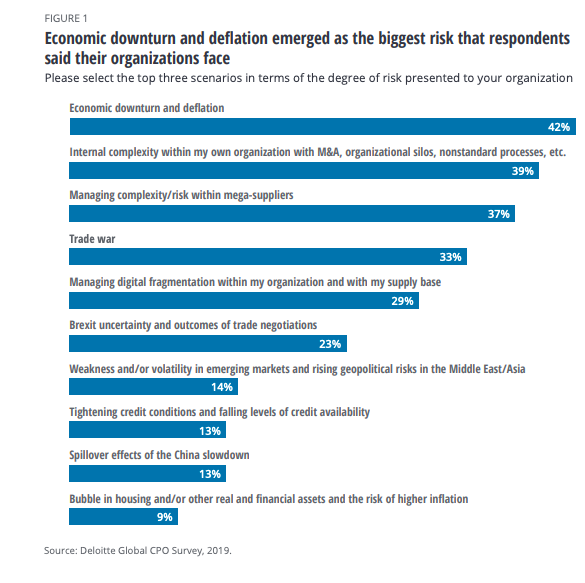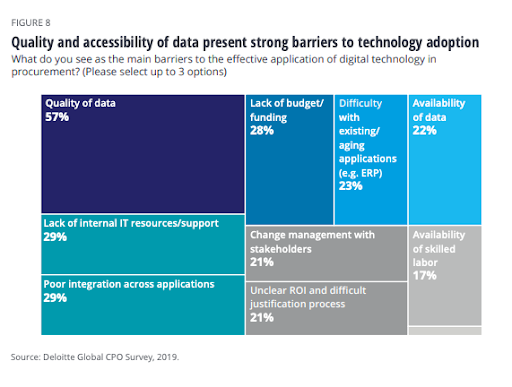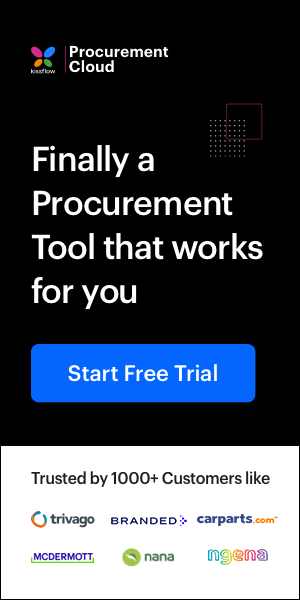Choosing the right procurement platform for a business, irrespective of the size or industry, can be challenging and time-consuming like walking through a minefield . Even small missteps can cause disasters like revenue loss to customer churn and legal complications.
The difficulty lies not only in the fact that there are many solutions and technologies to choose from. But you also have to consider deployment options, ability to customize, cost, scalability, and business value, before you decide.
With so many things to consider and weigh-in when choosing a procurement software for your business, there is another important thing that you have to address – your own needs! In fact, it’s vital to carefully evaluate your business needs and match them to the functionality offered, your purchasing budget, and decide on the features you need.
If that sounds like a lot of work, then fear not as we’ll try our best to ease the stress of decision-making by identifying key features that an ideal procurement platform needs to have.
Top 7 features that every procurement software must have
To help procurement leaders in their search, we’ve compiled a list of must-have procurement platform features based on the functionalities offered by market leaders in this space.
- Unified, all-in-one platform
- Budget management
- Supplier lifecycle management
- Seamless integration
- Spend insights and reports
- Cloud-based model
- Customization
1. Unified, all-in-one platform
Typically in manual procurement, purchasing data is organized as decentralized and siloed systems. Disconnected systems force individual employees and teams to maintain separate documentation or use standalone records to manage purchasing which inturn makes it hard to get a unified view of the purchasing information and fosters dark purchasing patterns.
- Information about order requests, approvals, and order status is the same whether someone is at an office desk or on an official trip. Everyone looks at the same thing.
- Data only needs to be entered into the system once and it is changed throughout. This is a huge time saver that eliminates discrepancies and improves insight.
- With a supplier portal in place, suppliers can update information and product catalogs on their own, which saves them time, saves you time, and results in accurate data.

Observation:
Besides economic deflation, the major risk factor that keeps a CPO up at night is data accuracy and complexity.
Get a 10x advantage with Kissflow, a flexible procurement platform for all your needs
2. Budget management
An important aspect of procurement management is tracking and managing the available budget as the spend has a direct impact on the organization’s bottom line.
Creating and enforcing dynamic approval workflows can help businesses enhance the efficiency of their purchasing process by resolving approval bottlenecks and defining the authority required to make various sized purchases thus strengthening the purchasing approvals further.
A solution with rule-based budget controls and automated spend monitoring can make potential issues known before they impact your business.
Here’s how:
- Ongoing monitoring configurable to your business—and to specific categories of spend—prioritizing what truly matters most to you
- Compliance checks embedded for every purchase, every item, every step of the way
- Automated alerts that highlight budget overruns so you can take actions to avoid them
- Dynamic approvals and compliance management that customizes to your priorities
- A transparent view of current spend by offering spend insights during the approval phase
Spend insights tailored to an organization’s priorities, and delivered at the right times, lead to more proactive decisions. The more focused knowledge is, the more it has a purpose.
3. Supplier lifecycle management
Supplier management is the core function of every procurement platform. This functionality will help in identifying, onboarding, managing, and analyzing suppliers who span across multiple departments and categories within a procurement process.
In entry-level procurement management tools, this module might seem like a mere database for maintaining documentation like vendor information data (personal, transactional, etc.), purchase catalog, order history, and payment details.
A high-end procurement suite, on the other hand, will allow organizations to flexibly onboard, qualify, and manage suppliers. Businesses can measure a supplier’s performance accurately in regular intervals. Timely supplier evaluations and performance measures protect business interests of both parties.
Setting up supplier portals or inviting them into the procurement system will empower suppliers by offering them the option to electronically track the status of orders, delivery schedules, potential product shortages, and payments received. In addition to maintaining a record of interactions, a supplier portal can cut down manual errors, improving the overall relationship.
Something to ponder on:
- Why should you care about empowering your suppliers?
- What happens when they pull you down with their inefficiencies?
The right solution recognizes the differences within your business, and then builds functionality with the purpose of making supplier management work your way.
Everything from requisition to vendor management in one platform
4. Seamless integration
At the very least, an ideal procurement platform must offer a way to link with other third-party tools like accounting systems, finance cloud, and allow procurement staff import and export data directly from spreadsheets or other systems.
When your procurement platform connects seamlessly with other third-party software, it can eliminate data redundancy and human errors. A flexible procurement management tool that seamlessly syncs data by scanning data history, deduplicating, and updating without intervention is the need of the hour.

When you’re free from redundant processes and siloed data, everything from purchase requisitions to invoices will be available for instant access with consistent, up-to-date information which not only lowers risk but also speeds up decision making and insights retrieval.
Learn how to unleash the power of integrations with Kissflow.
5. Spend insights and reports
An ideal procurement platform should provide the most relevant data in the easiest way possible. It should be the best aggregator of purchase data, not just a creator of purchasing information.
Here’s what to look for:
- A solution that does a robust analysis of available purchasing data to offer a wide range of actionable insights
- It must be powerful enough to manipulate and display purchasing data in an array of formats like pivot tables, charts, and more
- Ability to use APIs that reach out to hundreds of thousands of sources for the most relevant data
- Ready-to-use reports that turn insightful information into simple, visual rich reports that are customizable based on region, business unit, and category
No matter what purpose it serves, the most relevant, most reliable, most accessible information is the most valuable since it simplifies decision making and improves predictability.
6. Cloud-based model
Businesses can no longer make do with on-premise, siloed procurement suites. The new-age workplace has changed. It calls for an omni-channel, always-accessible solution to perform procurement operations on-the-go.
A cloud-based procurement software will enable organizations to create, manage, and maintain a centralized database that could be accessed at any time from anywhere. Procurement cloud solutions are scalable, cost-effective, and free from software updates and installation hassles.
While traditional on-premise tools take anywhere from a few months to a year for deployment, hybrid takes nearly half the time, a cloud-based platform like Kissflow Procurement Cloud needs only four weeks to get the procurement platform up and running.
7. Customization
To be honest, an off-the-shelf procurement solution will never match your business or process needs perfectly. Implementing boxed procurement tools that require a trained IT professional to customize is a lot of work for little returns.
An organization can derive more value from a procurement platform if there is a possibility of modelling unique procurement processes with it, using the tool to standardize, streamline, and reinvent procure-to-pay processes, instead of trying to fit your processes into a rigid tool.
Here’s what to look for:
- A procurement tool that allows administrators to tailor custom business rules, edit form fields, create unique workflows, and modify user roles and permissions
- Procurement suites that offer the ability to customize extensions, plugins, and APIs to expand the capabilities of the procurement suite
- A customizable vendor and user portal where end users like vendors and requisitioners can configure the solution to meet suit their preferences
The customizable nature of a procurement platform can be determined by its underlying architecture which directly impacts the extent to which it can be customized. Most Kissflow customers have taken the advantage of its flexible architecture to model their unique purchasing processes and meet the evolving business demands without the help of IT.
Conclusion
Choosing the correct procurement platform for your business is an important and sometimes lengthy process. The considerations above can help guide your decision making as you start your procurement platform research. It is possible that your prospective procurement management tool can miss one or two of these essential features.
In such cases, rather than stubbornly waiting for the perfect tool to be made, or opting for expensive IT customizations, it is wise to look for a simple workaround: a customizable procurement cloud.




